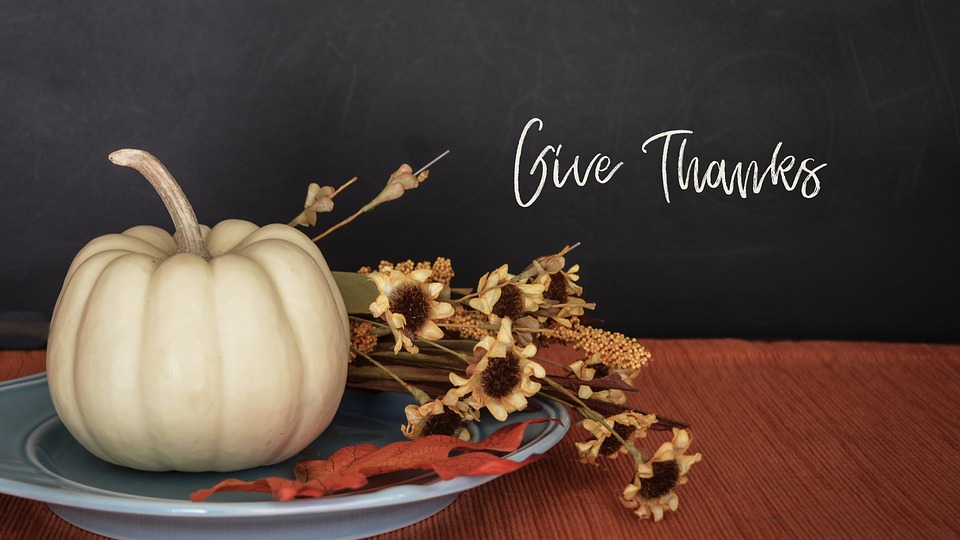By Morgan Crawford, Current ASU Nutrition Student
Alright, I have to admit it… I am obsessed with Thanksgiving. How could anyone not absolutely love a holiday that is centered around food!? Well, I guess most holidays are focused on delicious eats, but Thanksgiving is the King of them all. Mashed potatoes, stuffing, turkey, green bean casserole, cranberry sauce, sweet potatoes—it sounds more like a holiday that celebrates the gift of carbohydrates. In a sense, this is true, but there is much more to it.

Thanksgiving is the day that families gather around the dinner table and share a meal together. There is something so special about spending all day in the kitchen and preparing a meal to share with those we love. It’s a fundamental element of the family unit that I think many of us have lost in recent decades. As society has changed, responsibilities have multiplied, and life has become more complicated, the sweet family moments within the home have diminished. I think this is why I have such a fondness for Thanksgiving; it reminds us of why family is so important and how preparing and sharing a meal together can bring us back to our roots.
The Original Feast
The first Thanksgiving in 1621 was very different from what it is now. Many of the dishes that fill our tables today weren’t even eaten by the Pilgrims at the original feast. When we think of the Thanksgiving meal, turkey is what probably first comes to mind, but it isn’t known whether this was actually present at the first meal in Plymouth. More than likely, it wasn’t. Instead, proteins such as lobster, seal, and swans were eaten. Additionally, desserts that are typically associated with the holiday, such as pumpkin and pecan pie, are also relatively new traditional dishes. Due to the lack of sugar and modern cooking techniques, the Pilgrims did not partake in the sweets that we see today. I have to say, the dishes that we now eat on Thanksgiving sound much better than what the original feast must have looked like. I think most of us are thankful that swans and seals aren’t on the menu during the holidays.
History of Thanksgiving
It was during the American Revolution that the first official proclamation for a day of Thanksgiving was made by George Washington. At the time, each state chose its own date on which to celebrate, until twenty-eight years later in 1817, when New York was the first to choose a specific date. In 1863, Abraham Lincoln declared it a national holiday to be celebrated on the last Thursday in November. Franklin D. Roosevelt then changed it in 1939 to be on the third Thursday, which is what has remained to this day. Throughout the years, the date is not the only thing that has changed. The meaning and reason for celebration has also evolved. What is said to be the first Thanksgiving in Plymouth was a celebration of the first successful harvest after arriving in Plymouth, Massachusetts. During the American Revolution, George Washington declared it a day to celebrate the end of the war of independence. While we keep these specific times in mind, the meaning behind the holiday has changed quite a lot. I think many of us would say it is now a celebration of family and a time to be thankful for what we have been given.
Recipes
As much as we love the rich, buttery, carb-heavy meal that is served on Thanksgiving, there is always room for some improvement in the health department. I love testing out new recipes that offer a lighter, more nutritious take on the traditional holiday dishes. Here are some for you to try out if you’re looking to do the same.
This recipe is a great alternative to traditional mashed potatoes. With sweet potatoes and cauliflower, it comes packed with nutrients!
Sweet Potato Cauliflower Mash
Ingredients:
2 pounds sweet potatoes
1 pound cauliflower florets
3 tablespoons milk of choice
¼ cup plain Greek yogurt
½ teaspoon garlic powder
Salt and pepper to taste
Fresh chopped parsley for garnish
Instructions:
- Peel sweet potatoes and dice into cubes.
- Steaming option: Place sweet potatoes and cauliflower in a steam basket with 1 inch of water in the bottom of the pot. Cook until tender. This will take 10-15 minutes.
- Boiling option: Place sweet potatoes and cauliflower in a large pot of boiling water. Cook until tender—test by poking with a fork.
- Transfer cooked vegetables to a large bowl and mash together. Mix in yogurt, garlic powder, salt, and pepper.
- Garnish with parsley and serve.
This recipe is the perfect gluten-free option for the holidays. Try out this quinoa dish for a fun spin on stuffing.
Lemon Quinoa
Ingredients:
2 cups butternut squash
1 cup quinoa
1-2 tablespoons lemon juice
¼ cup shallots- chopped
4 cloves garlic- minced
1 tsp thyme- dried
2.5 cups vegetable broth
1 tsp lemon zest
salt and pepper to taste
2 tablespoons pine nuts for garnish
Instructions:
- Preheat oven to 450 degrees Fahrenheit.
- Peel butternut squash, cut in half and scoop out seeds using a spoon.
- Dice into ½ inch cubes and place on baking tray (use parchment or a silicone mat). Bake for 15-20 minutes.
- Rinse quinoa with cool water. Cook shallots and garlic in a large pot. Add quinoa and toast for 2-3 minutes.
- Add squash, thyme, and vegetable broth to the pot. Put burner on simmer, cover with a lid, and allow to cook until all of the liquid has been absorbed.
- Add lemon juice and zest. Add salt and pepper to taste.
- If desired, add toasted pine nuts.
If you enjoyed these recipes be sure to check out the Fill Your Plate recipe section. Are you looking for more nutrition-related articles? Check out the Fill Your Plate blog where new articles are posted every week.

